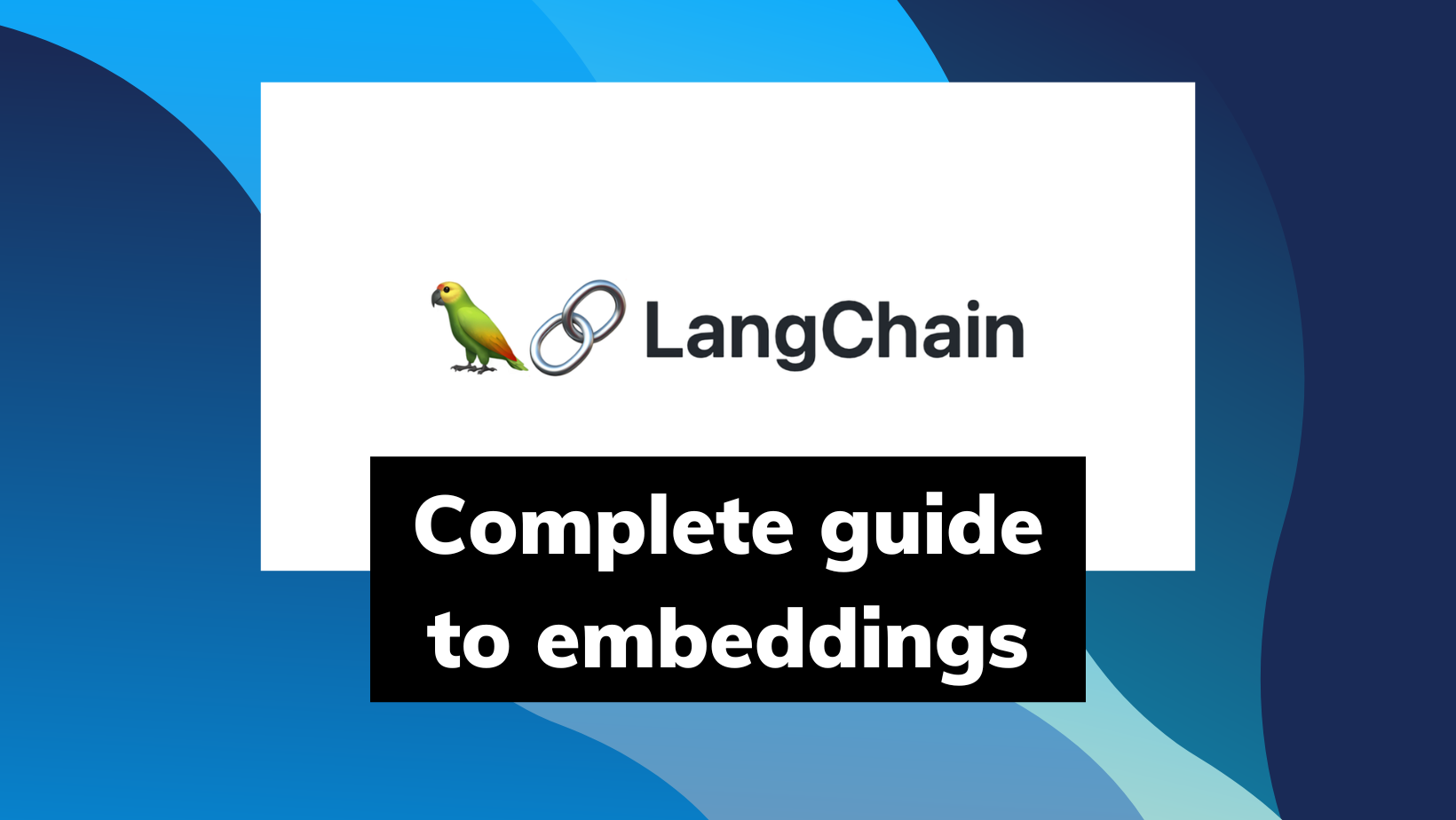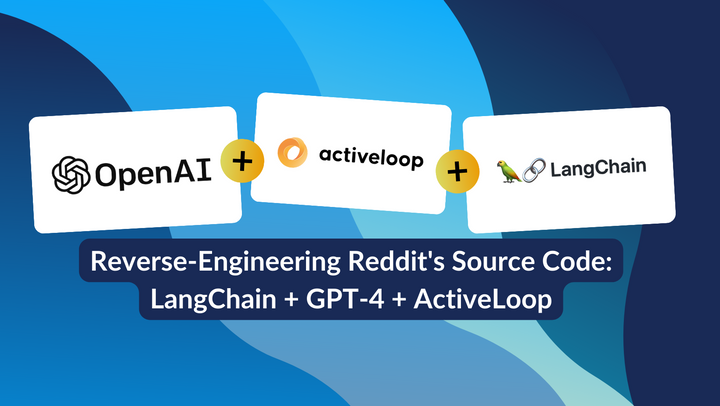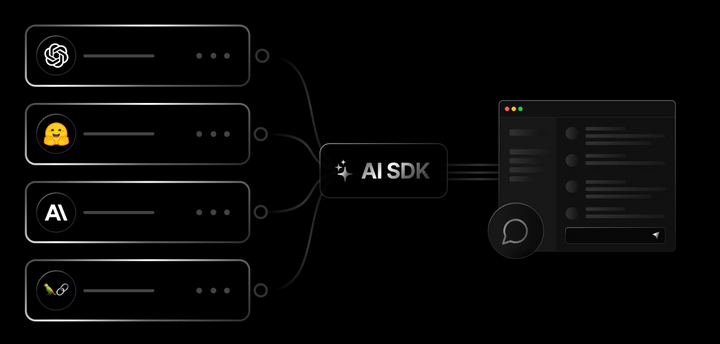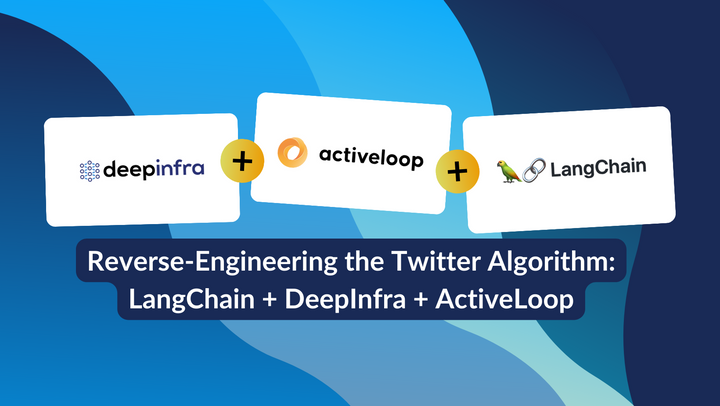A Comprehensive Overview of Embeddings in LangChain
An in-depth look at using embeddings in LangChain, including integration options, rate limits, and errors.

In the field of natural language processing (NLP), embeddings have become a game-changer. They allow us to convert words and documents into numbers that computers can understand. These numerical representations, known as embeddings, are vital for tasks like understanding text, analyzing sentiments, and translating languages.
This article explores embeddings in LangChain, a user-friendly platform for creating embeddings. We’ll explain what embeddings are and how they work in AI. We’ll also dive into LangChain’s embedding capabilities and how it makes generating embeddings for queries and documents easy.
LangChain goes beyond just providing embedding functions. It integrates with different models to offer a variety of embedding options. We’ll explore some of these integrations, such as GloVeEmbeddings, BERTEmbeddings, Word2VecEmbeddings, and FastTextEmbeddings, and their advantages.
By the end of this article, you’ll have a clear understanding of embeddings, their importance in NLP, and how LangChain simplifies the process of using embeddings. Let’s dive into the world of embeddings and unleash the power of language understanding with LangChain.
What are Embeddings?
In the realm of natural language processing (NLP), embeddings are a method to convert text data into a numerical format that machine learning algorithms can understand and process. Each word (or document) is transformed into a high-dimensional vector that represents its context in the dataset. The beauty of these vectors is that they can capture semantic relationships between words - words that are used similarly will have similar vectors.
Embeddings are an essential aspect of many NLP tasks, including text classification, sentiment analysis, and language translation, to name a few. They help us quantify and categorize linguistic data in a way that is analogous to how humans understand language.
Embeddings in LangChain: A Closer Look
LangChain offers a powerful and easy-to-use interface for generating embeddings. But what is happening under the hood when we call these functions? Let's break it down.
Embedding Queries
When we call embedQuery("Hello world"), LangChain takes the text string "Hello world", and converts it into a numerical representation - an embedding. This function returns an array of numbers, each representing a dimension in the embedding space.
/* Embed queries */
const res = await embeddings.embedQuery("Hello world");
What you see in the res array is the numerical representation of "Hello world". It might look like a random array of numbers, but these numbers encode the meaning of "Hello world" in a way that a machine learning model can understand.
Embedding Documents
Just as we can create embeddings for queries, we can do the same for documents. The embedDocuments function takes an array of text strings and returns an array of their respective embeddings.
/* Embed documents */
const documentRes = await embeddings.embedDocuments(["Hello world", "Bye bye"]);
In this case, documentRes is a two-dimensional array, with each sub-array being the embedding of the corresponding document.
Embedding Integrations in LangChain
LangChain provides multiple classes for generating embeddings, each integrating with a different model provider.
OpenAIEmbeddings
The OpenAIEmbeddings class uses the OpenAI API to create embeddings. You can either use OpenAI's API key or Azure's OpenAI API key. Here's an example of how to use Azure's OpenAI API key:
import { OpenAIEmbeddings } from "langchain/embeddings/openai";
const embeddings = new OpenAIEmbeddings({
azureOpenAIApiKey: "YOUR-API-KEY",
azureOpenAIApiInstanceName: "YOUR-INSTANCE-NAME",
azureOpenAIApiDeploymentName: "YOUR-DEPLOYMENT-NAME",
azureOpenAIApiVersion: "YOUR-API-VERSION",
});
Other Integrations
Other integrations include CohereEmbeddings, TensorFlowEmbeddings, and HuggingFaceInferenceEmbeddings. For example, to use CohereEmbeddings, you would do:
import { CohereEmbeddings } from "langchain/embeddings/cohere";
const embeddings = new CohereEmbeddings({
apiKey: "YOUR-API-KEY",
});
Additional Features and Handling Errors
LangChain also offers a variety of additional features such as setting a timeout, handling rate limits, and dealing with API errors.
For instance, if you want LangChain to stop waiting for a response after a certain amount of time, you can set a timeout:
import { OpenAIEmbeddings } from "langchain/embeddings/openai";
const embeddings = new OpenAIEmbeddings({
timeout: 1000, // 1s timeout
});
In this example, if the embedding process takes longer than 1 second, LangChain will stop waiting and move on. This can be especially useful when dealing with large documents that might take a while to process, or when you're working with a slow or unreliable internet connection.
Dealing with Rate Limits
Rate limiting is a strategy implemented by many API providers to prevent users from overloading their servers with too many requests in a short period of time. If you exceed the rate limit, you will receive an error message.
LangChain provides a handy feature to manage rate limits. You can set a maxConcurrency option when instantiating an Embeddings model. This option allows you to specify the maximum number of concurrent requests you want to make to the provider. If you exceed this number, LangChain will automatically queue up your requests and send them as previous requests are completed.
Here is an example of how to set a maximum concurrency of 5 requests:
import { OpenAIEmbeddings } from "langchain/embeddings/openai";
const model = new OpenAIEmbeddings({ maxConcurrency: 5 });
Handling API Errors
If the model provider returns an error, LangChain has a built-in mechanism to retry the request up to 6 times, with exponential backoff. This means that each retry will wait twice as long as the previous one before attempting the request again. This strategy can often help to successfully complete the request, especially in cases of temporary network problems or server overloads.
If you want to change the maximum number of retries, you can pass a maxRetries option when you instantiate the model:
import { OpenAIEmbeddings } from "langchain/embeddings/openai";
const model = new OpenAIEmbeddings({ maxRetries: 10 });
In this example, LangChain will retry failed requests up to 10 times before finally giving up.
Conclusion
To conclude, embeddings are a powerful tool in NLP tasks, and LangChain provides a robust, flexible, and user-friendly interface for generating and working with embeddings. With the ability to integrate with multiple providers, handle rate limits, and manage API errors, LangChain is an excellent choice for any AI project.
To find out more about LangChain and its other exciting features, take a look at the 'Complete Guide to LangChain' or the 'LangChain Chat Models Overview'.
Subscribe or follow me on Twitter for more content like this!




Comments ()